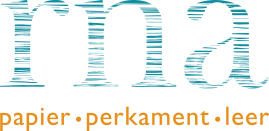The Librije in Enkhuizen is the only seventeenth-century city library in the Netherlands that has been preserved in its original location. On the occasion of its 400th anniversary in 2015, the Foundation Librije Enkhuizen had one of its highlights restored, De humani corporis fabrica libri septem by Andreas Vesalius. This book left the presses of the printing shop of John Oporinus in Basel in June 1543.
The book is still in its fifteenth century binding with which it was furnished shortly after printing. The binder sewed the signatures on vegetable tanned leather sewing supports. In addition to the usual wear of the leather cover of the binding, in this case quite severe since the back had completely gone, the supports were broken in several places. That is a common issue because vegetable tanned leather becomes brittle when it ages and breaks easily. In order to replace the supports, the sewing had to be redone too. The book block was therefore dismounted.
The book block of beautiful handmade paper was geberally in good condition. To the extent that the paper had been damaged, this was largely due to the failing of the book’s construction. Its leaves and signatures had slid independently from one another and caused the paper to tear. Besides there was water damage, also visible through the black discoloration on the front cover, which had discolored the paper along the spine and head edge and made it felty. Tears and lacunae were repaired using Japanese paper and starch.
The book block is sewn again, this time on supports of cord which retain their firmness and flexibility better than vegetable tanne dleather. At the back the two membra disiecta were sewn in a gathering of handmade paper. They had been stuck under the endpapers against the wooden boards. Together they form one parchment leaf from a probable southern European, tenth-century manuscript.
After the spine of the book block had been lined with thin aero cotton and glue, the wooden boards were reattached by lacing the ends of the sewing cords thorugh the original holes. Most of the remains of the original leather supports were preserved. Then it was rebacked with new and toned calfskin and the detached parts of the original leather were pasted back.
The restoration was made possible thanks to the financial support of the Stichting Boek & Wurm.
